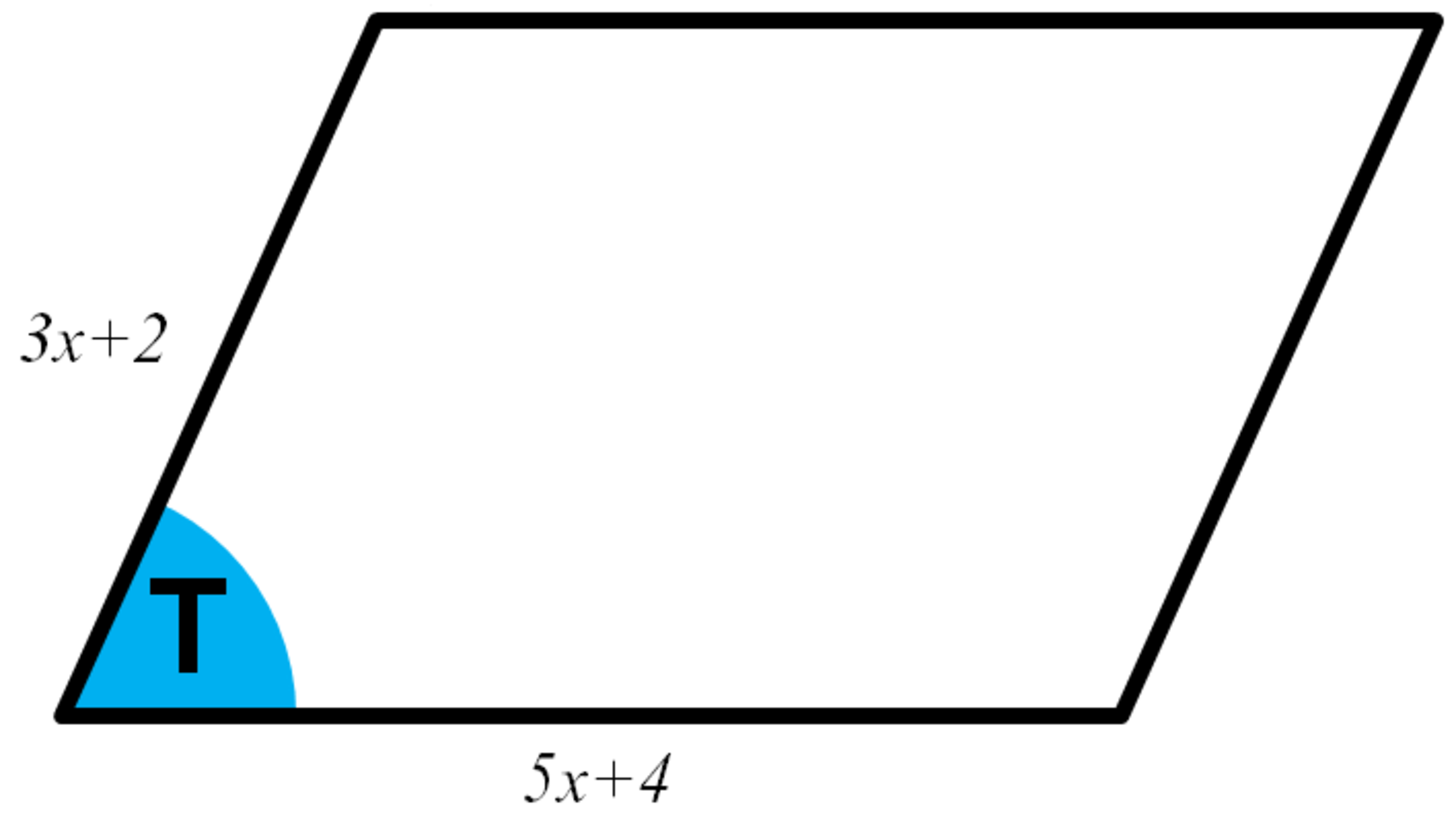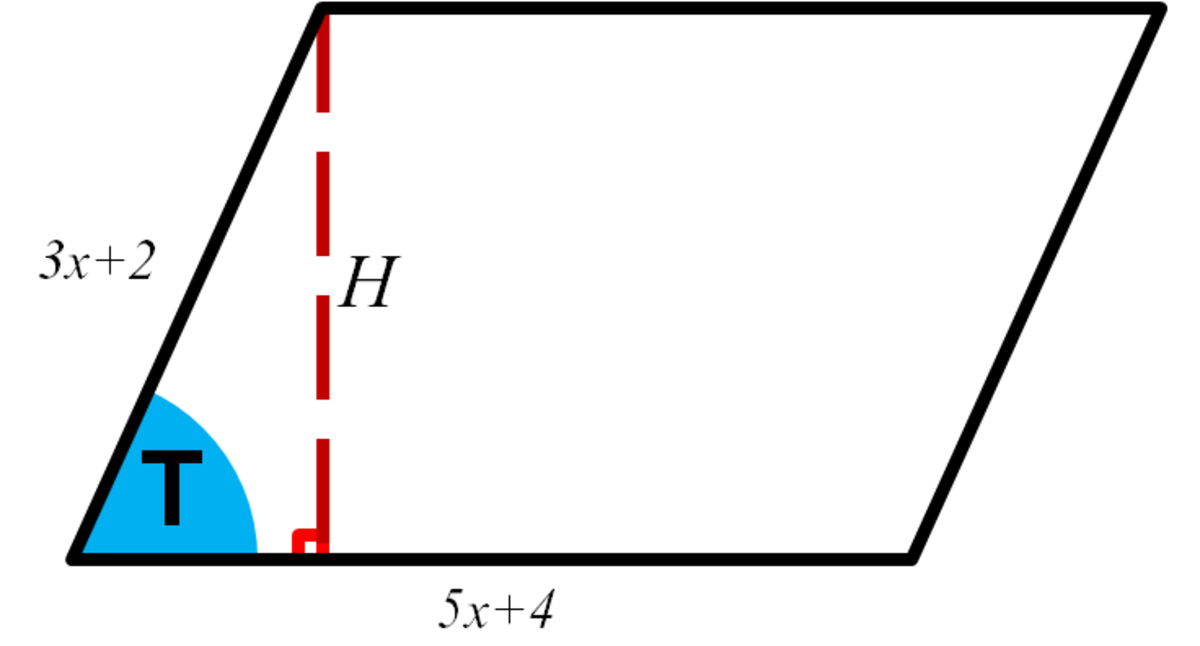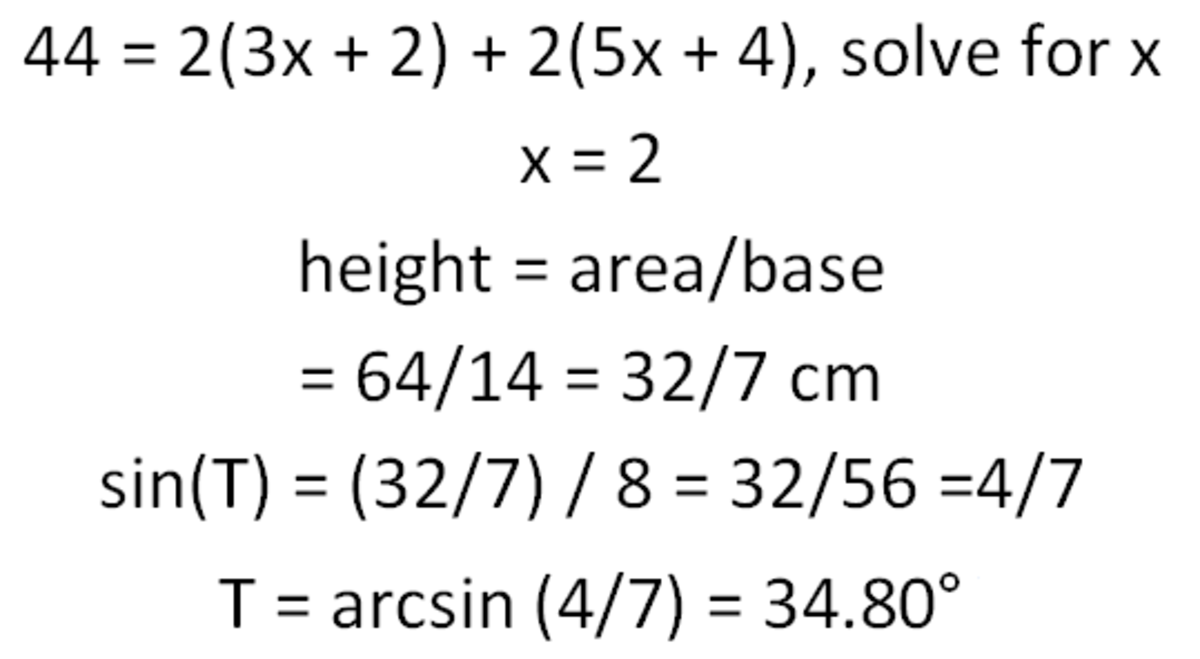A geometry problem by Yahia El Haw
The parallelogram shown in the figure below has a perimeter of 44 cm and an area of 64 cm
2
. Find angle T in degrees.

The answer is 34.80.
This section requires Javascript.
You are seeing this because something didn't load right. We suggest you, (a) try
refreshing the page, (b) enabling javascript if it is disabled on your browser and,
finally, (c)
loading the
non-javascript version of this page
. We're sorry about the hassle.
4 solutions
Since the perimeter is the sum of the side lengths, we have
4 4 = 2 ( 3 x + 2 ) + 2 ( 5 x + 4 )
4 4 = 6 x + 4 + 1 0 x + 8
x = 2
Therefore, 3 x + 2 = 8 and 5 x + 4 = 1 4 .
The area of a parallelogram is a b sin θ where a and b are two adjacent sides and θ is the included angle. We have
6 4 = 8 ( 1 4 ) ( sin T )
sin T = 7 4
T = sin − 1 ≈ 3 4 . 8 5 ∘
The parameter is given by:
2 ( 3 x + 2 + 5 x + 4 ) 1 6 x + 1 2 ⟹ x = 4 4 = 4 4 = 2
The area is given by:
( 3 x + 2 ) ( 5 x + 4 ) sin ( T ) ( 6 ) ( 1 4 ) sin ( T ) sin ( T ) ⟹ T = 6 4 = 6 4 = 7 4 = 3 4 . 8 5 0 ∘
From the perimeter, solve for x , we have
4 4 = 2 ( 3 x + 2 ) + 2 ( 5 x + 4 ) ⟹ 4 4 = 6 x + 4 + 1 0 x + 8 ⟹ x = 2
The sides therefore area 3 ( 2 ) + 2 = 8 and 5 ( 2 ) + 4 = 1 4 . Now using the formula: A = a b sin θ where a and b are side lengths and θ is the included angle, we have
6 4 = 1 4 ( 8 ) sin T
sin T = 7 4
T = sin − 1 7 4 = 3 4 . 8 5 ∘

